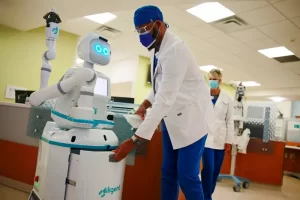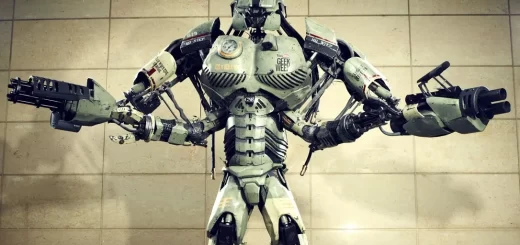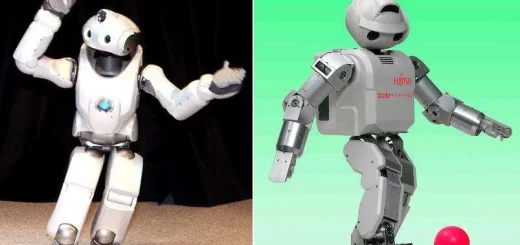Moxi, the AI-powered robot nurse assistant, Can Moxi robots replace human nurses?
Moxi can handle repetitive tasks, such as fetching supplies, delivering medications, and transporting patients, thereby freeing up nurses for more complex care. Moxi can save nurses up to 300 miles of walking per month by completing deliveries and errands.
Moxi Robot features
Moxi, the AI-powered robot created by Diligent Robotics, is designed to assist nurses in hospitals. Moxi‘s name comes from the word “moxie,” meaning courage, spirit, and determination, reflecting its ability to tackle tasks in healthcare. Robots collaborate with humans to improve patient care and efficiency.
Moxi doesn’t look robotic in the traditional sense. Its design aims to be approachable and non-threatening, resembling a small, friendly assistant. The name “Moxi” is a play on the words “mobile” and “oxytocin,” the hormone associated with love and bonding.
Moxi isn’t limited to hospitals. It can be used in various settings, such as senior living facilities, research labs, and manufacturing plants. Moxi‘s face design displays social cues, like eye movements and a small smile, to help humans feel comfortable and understand its intentions.
Moxi can respond to emotions and adapt its communication style accordingly. Moxi played a crucial role in assisting Texas hospitals during the COVID-19 pandemic, delivering supplies, and reducing risk for staff. Moxi was secretly programmed with hidden dance routines, revealed during a company presentation to add a fun touch.
Moxi wasn’t designed just for tasks. It has a face that can show emotions, to make its interactions more friendly and natural. Moxi was so popular with staff that the developers programmed in “social laps” where it would wander around and flash heart eyes at people.
Moxi can understand basic emotions in human speech and respond accordingly, making interactions feel more personal. Unlike humans, Moxi doesn’t need breaks or sleep, so it can work tirelessly to support medical staff. Moxi can navigate busy hospital environments, deliver supplies, and open doors with its single arm.
While Moxi is primarily used in healthcare, its technology could be adapted for other industries like hospitality or retail. Moxi is constantly learning and evolving thanks to its AI capabilities. This means it can adapt to new tasks and situations.
Moxi can express emotions through its LED eyes and body language, even winking or flashing heart eyes. Moxi‘s downtime included “social laps” where it would roam and chat with hospital staff, becoming quite popular. Moxi can be programmed with custom greetings and phrases, adding a personal touch to interactions.
Moxi can save nurses up to 300 miles of walking in just six weeks. It can learn the layout of a hospital and navigate autonomously, avoiding obstacles and people. Moxi can remember and prioritize tasks, ensuring efficient delivery of supplies and medications.
Moxi can play music and tell jokes, potentially boosting patient morale. It can be used for educational purposes, showing patients medical information, or demonstrating exercises. Moxi can help with administrative tasks like data entry, freeing up nurses’ time further.
Moxi is still under development, and new features are constantly added. It may one day be able to perform more complex tasks like taking vital signs or assisting with minor procedures. Moxi could become a valuable tool in telemedicine, allowing remote doctors to interact with patients through the robot.
Advantages of Moxi
Moxi, the AI-powered robot nurse assistant from Diligent Robotics, has generated interest in its potential to aid overworked medical professionals. Moxi can handle routine tasks like delivering supplies, fetching equipment, and disposing of waste, freeing nurses for more complex patient care. This can lead to shorter wait times and improved patient outcomes. which improves overall workflow and efficiency in busy hospital environments.
Moxi can navigate contaminated areas or handle infectious waste without putting nurses at risk, minimizing the spread of germs and protecting healthcare workers. This is beneficial in pandemics, isolation wards or outbreaks. Moxi can automatically document its actions and patient interactions, reducing the administrative burden on nurses and ensuring accurate records.
Moxi can collect valuable data on patient care, hospital operations, and resource utilization, which can be used to improve processes and personalize care. Moxi can engage with patients in basic conversations and provide companionship, potentially reducing anxiety during hospital stays.
Moxi can provide emotional support to patients, reducing loneliness. It can offer basic entertainment and educational resources, enhancing their stay. Moxi can collect valuable data on patient vitals, medication adherence, and environmental conditions. This data can be used to improve patient care, optimize hospital operations, and identify potential issues early on.
Moxi can reduce the physical and mental strain on nurses, improving job satisfaction and potentially lowering burnout rates. Moxi can fetch supplies, deliver medications, and transport patients. Moxi can work tirelessly, unlike human nurses who need breaks and sleep.
Moxi can monitor vital signs, remind patients to take medication and provide basic emotional support, potentially improving patient outcomes. By automating tasks, Moxi can help hospitals run more efficiently, potentially reducing costs. Moxi can perform tasks in hazardous environments or with infectious patients, protecting healthcare workers.
Disadvantages of Moxi
Moxi robots are expensive to purchase and maintain, which may be a barrier for some hospitals. While Moxi can handle many tasks, it cannot replace the critical thinking and emotional intelligence of human nurses. Moxi is still under development, and its capabilities are limited compared to human nurses. It may not be suitable for all situations or patient needs.
Some people fear that robots like Moxi could lead to job losses for nurses, though others argue that they will create new opportunities. As with any technology, Moxi can experience technical malfunctions or glitches, which could disrupt workflow and patient care.
There are several ethical considerations surrounding the use of AI in healthcare, including job displacement, data privacy, patient autonomy, and potential biases in algorithms. Moxi currently operates under the supervision of human nurses and cannot perform complex tasks or make critical decisions independently.
Building trust in a robotic caregiver can take time and acceptance among patients, nurses, and other staff is crucial for Moxi‘s successful integration into healthcare settings. Moxi cannot perform complex tasks like diagnosis or treatment and relies on human oversight.
You can follow science online on YouTube from this link: Science online
Healthcare robotics, Nursing care robots review, types, advantages, disadvantages and uses
Moxie robot advantages, disadvantages and what does a moxie robot do?
Robotic surgery cons, pros, uses and How does robotic surgery work?
Artificial intelligence in medical field advantages & how AI medical diagnosis changes medicine
Surgical robots types, advantages, disadvantages, How is robotic surgery different from traditional
Applications of Artificial intelligence in the medical field and Healthcare
Importance of Artificial intelligence in healthcare and medicine
Domestic robot or Service Robots types, advantages and disadvantages




